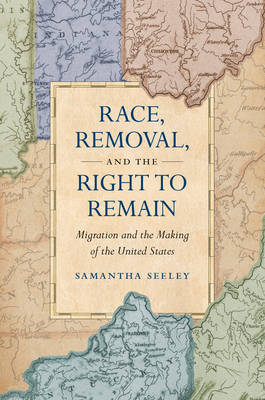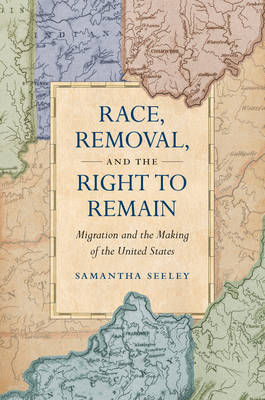
- Afhalen na 1 uur in een winkel met voorraad
- Gratis thuislevering in België vanaf € 30
- Ruim aanbod met 7 miljoen producten
- Afhalen na 1 uur in een winkel met voorraad
- Gratis thuislevering in België vanaf € 30
- Ruim aanbod met 7 miljoen producten
Zoeken
Race, Removal, and the Right to Remain
Migration and the Making of the United States
Samantha Seeley
€ 57,45
+ 114 punten
Uitvoering
Omschrijving
Who had the right to live within the newly united states of America?
In the country's founding decades, federal and state politicians debated which categories of people could remain and which should be subject to removal. The result was a white Republic, purposefully constructed through contentious legal, political, and diplomatic negotiation. But, as Samantha Seeley demonstrates, removal, like the right to remain, was a battle fought on multiple fronts. It encompassed tribal leaders' fierce determination to expel white settlers from Native lands and free African Americans' legal maneuvers both to remain within the states that sought to drive them out and to carve out new lives in the West. Never losing sight of the national implications of regional conflicts, Seeley brings us directly to the battlefield, to middle states poised between the edges of slavery and freedom where removal was both warmly embraced and hotly contested.
Reorienting the history of U.S. expansion around Native American and African American histories, Seeley provides a much-needed reconsideration of early nation building.
In the country's founding decades, federal and state politicians debated which categories of people could remain and which should be subject to removal. The result was a white Republic, purposefully constructed through contentious legal, political, and diplomatic negotiation. But, as Samantha Seeley demonstrates, removal, like the right to remain, was a battle fought on multiple fronts. It encompassed tribal leaders' fierce determination to expel white settlers from Native lands and free African Americans' legal maneuvers both to remain within the states that sought to drive them out and to carve out new lives in the West. Never losing sight of the national implications of regional conflicts, Seeley brings us directly to the battlefield, to middle states poised between the edges of slavery and freedom where removal was both warmly embraced and hotly contested.
Reorienting the history of U.S. expansion around Native American and African American histories, Seeley provides a much-needed reconsideration of early nation building.
Specificaties
Betrokkenen
- Auteur(s):
- Uitgeverij:
Inhoud
- Aantal bladzijden:
- 368
- Taal:
- Engels
- Reeks:
Eigenschappen
- Productcode (EAN):
- 9781469664811
- Verschijningsdatum:
- 17/08/2021
- Uitvoering:
- Hardcover
- Formaat:
- Genaaid
- Afmetingen:
- 196 mm x 239 mm
- Gewicht:
- 589 g

Alleen bij Standaard Boekhandel
+ 114 punten op je klantenkaart van Standaard Boekhandel
Beoordelingen
We publiceren alleen reviews die voldoen aan de voorwaarden voor reviews. Bekijk onze voorwaarden voor reviews.











